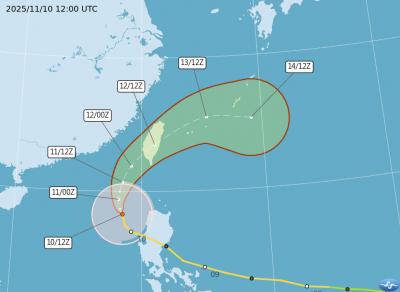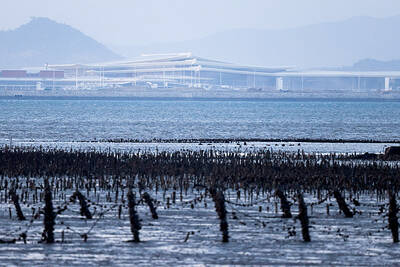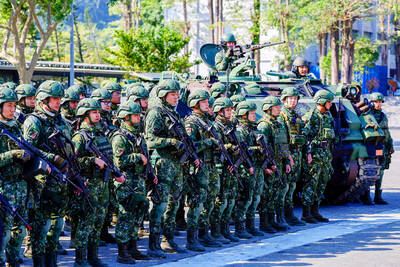Taiwan and the US could sign a contract for the sale of about US$11 billion in arms packages by the end of this year, breaking a hiatus on the US sale of weapons systems to Taiwan, said Rupert Hammond-Chambers, the president of the US-Taiwan Business Council.
Joseph Wu (吳釗燮), the nation’s outgoing representative to Washington, said he had not heard anything from administration officials about the possibility of movement on the arms sales, although he had heard such reports from “non-administration sources.” He expects the sales to go through “eventually.”
Echoing comments over the past week by the incoming Taiwanese representative to Washington, Jason Yuan (袁健生), as well as council chairman and former US deputy secretary of defense Paul Wolfowitz, Hammond-Chambers told the Taipei Times that his “optimistic expectation” was that the sales could start to move within weeks.
With a key shortcut in the process and speedy work by the administration and Congress, the Letter of Offer and Acceptance could be signed by the end of December, capturing the budget allocations approved by the Legislative Yuan in December last year.
Hammond-Chambers said that his prognostication was not based on personal assurances by the State Department, which has held back the deals, or congressional aides, but was his “speculation.”
The council’s members include US defense industry giants that make the weapons systems the US sells to Taiwan and are well connected through the Washington establishment. Moreover, Wolfowitz, when he was the No. 2 man at the US Department of Defense, was known to be very favorable to the arms sales program.
Wu told the Taipei Times that all he had heard from the administration was “the issue is still in the interagency process” — the same wording as that used by a State Department official when asked at the daily press briefing this week.
“That statement seems to be quite uniform,” Wu said. “That means if it’s in the process, the process is going to go through eventually.”
Hammond-Chambers outlined a potential timetable if Washington wanted to finalize the sale before the end of the year.
The State Department could unfreeze the sales early next month, after US President George W. Bush returns from attending the opening of the Beijing Olympic Games on Aug. 8 to Aug. 9. But with Congress scheduled to adjourn on Aug. 9 for its month-long summer break, Hammond-Chambers expects the administration to start the process of notifying the lawmakers of the potential sale before Congress adjourns.
To speed things along, the administration would have to negotiate with the congressional committees responsible for arms sales to waive the pre-consultation process, which would permit the US Defense Security Cooperation Agency (DSCA) — the Pentagon unit that handles foreign arms sales — to officially notify Congress of the sales when Congress returns on Sept. 8.
Congress would then have 30 days to vet the sale and return it to the DSCA in early October, giving the agency and Taiwan three months to nail down the deal in time to capture the budget money.
Most of the contracts have already been negotiated, and there is little of the contract language left to work out, Hammond-Chambers said.
“The framework is in place ... It’s more the bureaucratic time it takes to process the paperwork on both sides, that’s the most time consuming,” he said.
Hammond-Chambers and Wolfowitz have just returned from a four-day trip to Taipei where they met top officials, including President Ma Ying-jeou (馬英九), Vice President Vincent Siew (蕭萬長), Premier Liu Chao-shiuan (劉兆玄) and National Security Council Secretary-General Su Chi (蘇起). All of them said they wanted to buy the frozen arms packages, Hammond-Chambers said.
“Everybody was absolutely on message,” he said.
If the sales freeze is lifted, it would come after a broad-based and very public chorus of criticism of the freeze in Washington by the business council, congressional supporters of Taiwan, conservative think tanks, the media and defense contractor lobbyists.
The council, the most strident critic of the freeze, has taken a different tack, Hammond-Chambers said.
It was a “sense that we as an organization needed to take a more positive tone toward the ultimate outcome of all of this,” he said.

The Central Weather Administration (CWA) today issued a sea warning for Typhoon Fung-wong effective from 5:30pm, while local governments canceled school and work for tomorrow. A land warning is expected to be issued tomorrow morning before it is expected to make landfall on Wednesday, the agency said. Taoyuan, and well as Yilan, Hualien and Penghu counties canceled work and school for tomorrow, as well as mountainous district of Taipei and New Taipei City. For updated information on closures, please visit the Directorate-General of Personnel Administration Web site. As of 5pm today, Fung-wong was about 490km south-southwest of Oluanpi (鵝鑾鼻), Taiwan's southernmost point.

UNILATERAL MOVES: Officials have raised concerns that Beijing could try to exert economic control over Kinmen in a key development plan next year The Civil Aviation Administration (CAA) yesterday said that China has so far failed to provide any information about a new airport expected to open next year that is less than 10km from a Taiwanese airport, raising flight safety concerns. Xiamen Xiangan International Airport is only about 3km at its closest point from the islands in Kinmen County — the scene of on-off fighting during the Cold War — and construction work can be seen and heard clearly from the Taiwan side. In a written statement sent to Reuters, the CAA said that airports close to each other need detailed advanced

Tropical Storm Fung-Wong would likely strengthen into a typhoon later today as it continues moving westward across the Pacific before heading in Taiwan’s direction next week, the Central Weather Administration (CWA) said. As of 8am, Fung-Wong was about 2,190km east-southeast of Cape Oluanpi (鵝鑾鼻), Taiwan’s southernmost point, moving westward at 25kph and possibly accelerating to 31kph, CWA data showed. The tropical storm is currently over waters east of the Philippines and still far from Taiwan, CWA forecaster Tseng Chao-cheng (曾昭誠) said, adding that it could likely strengthen into a typhoon later in the day. It is forecast to reach the South China Sea

Almost a quarter of volunteer soldiers who signed up from 2021 to last year have sought early discharge, the Legislative Yuan’s Budget Center said in a report. The report said that 12,884 of 52,674 people who volunteered in the period had sought an early exit from the military, returning NT$895.96 million (US$28.86 million) to the government. In 2021, there was a 105.34 percent rise in the volunteer recruitment rate, but the number has steadily declined since then, missing recruitment targets, the Chinese-language United Daily News said, citing the report. In 2021, only 521 volunteers dropped out of the military, the report said, citing